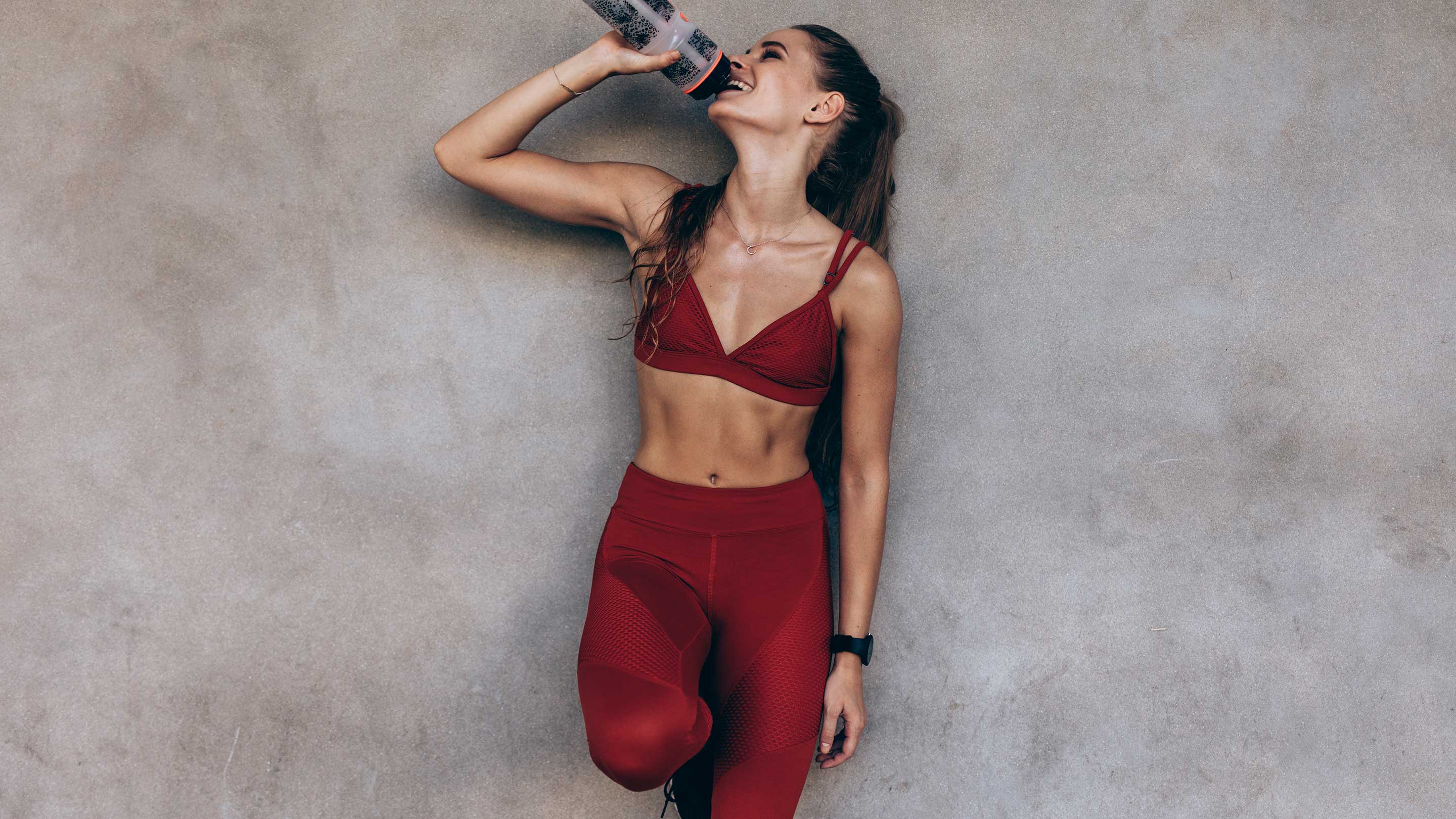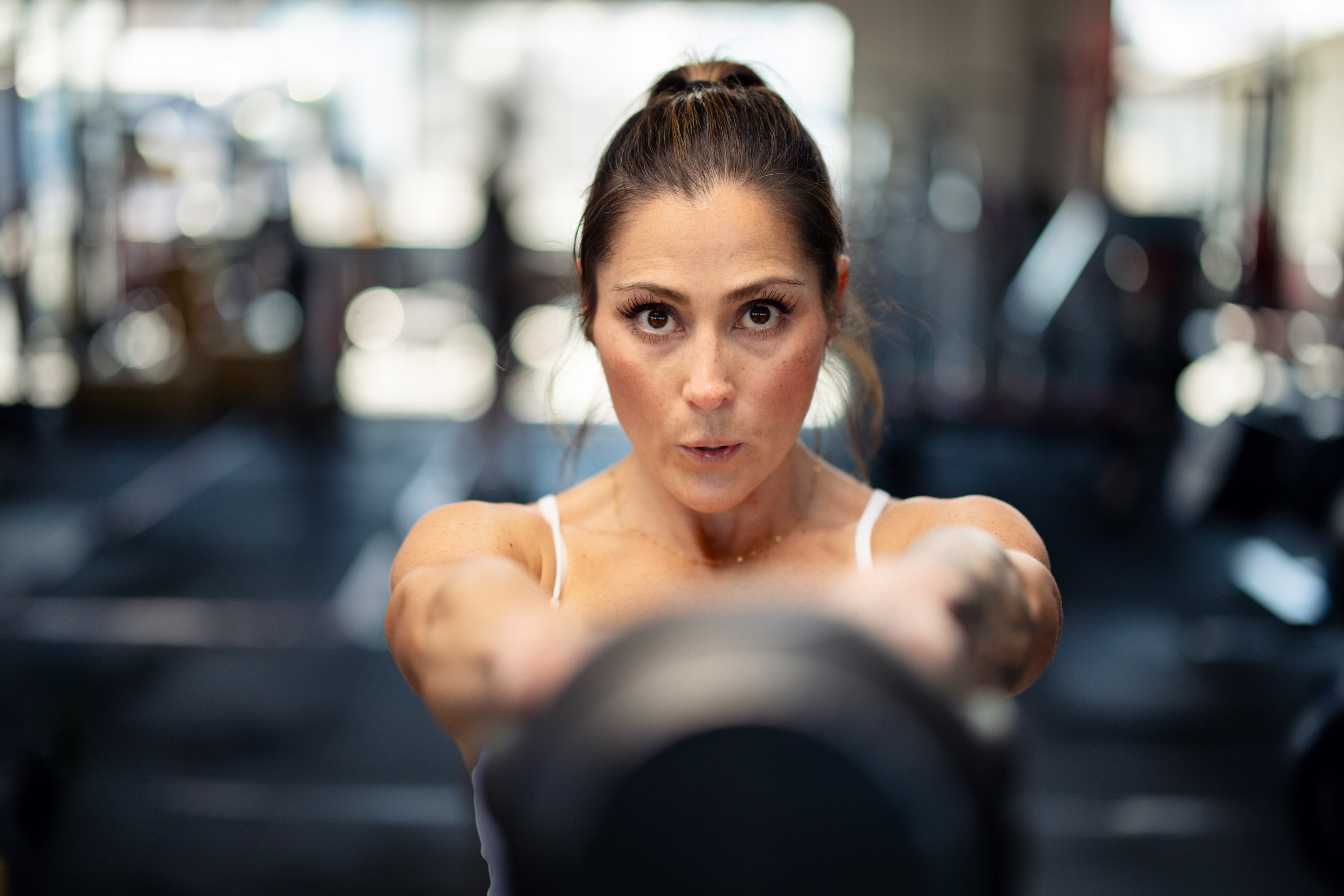Are you ready to make a positive and healthy transformation for your body?
If so, you’re probably wondering what steps you need to take to achieve a fit physique as well as how long it will take.
Well, you’re in luck!
Learn how to achieve a lean physique with our expert tips for diet and training.
How Long Does it Take to Get a Lean Body?
Virtually everyone who has ever embarked on a weight loss journey or transformation challenge has wondered how long it does take to get a lean physique.
It's entirely natural to ponder this concept. After all, if you're willingly subjecting your mind and body to increased amounts of physical activity in addition to consuming a smaller amount of food per day, you will want to know how long you'll have to do it.
Unfortunately, there’s no “one-size-fits-all” answer.
The honest answer is… it depends.
How long it takes to lose excess body fat and get a lean physique depends on several factors, including (but not limited to):
- Starting body fat percentage
- Genetics
- Lifestyle factors (e.g., sleep, stress levels, etc.)
- How large of a calorie deficit do you create
- Training intensity
- Training volume
What is Considered a Lean Physique?
Being "lean" can mean different things to different people (e.g., the stay-at-home mom vs. the weekend warrior), but in regards to the physique athlete/bodybuilding paradigm, being "lean" generally means being in the range of 7-10% body fat, assuming you're getting measured accurately.
FYI, various body composition measurement devices (bioelectrical impedance, bodpod, scales, etc.) are notoriously inaccurate, often reporting a number much lower (or at times, higher) than your actual body fat percentage.
For most men to see their abs, they need to be at least 12% body fat, and most women need to be ~24% body fat. To attain the highly sought-after "six-pack" abs, most guys need to be 10% body fat (or lower), and the majority of girls need to be at least 20% body fat.
Lastly, to get the type of abs that “pop,” most guys need to be at least 8% body fat, and most women need to be at least 18% body fat.
Now, do you have to have shredded washboard abs to be considered "lean" or "healthy?"
No…far from it.
The American Council on Exercise (ACE) has put forth a chart that categorizes different levels of body composition[1]:
| Description | Women | Men |
| Essential Fat | 10-13% | 2-5% |
| Athletes | 14-20% | 6-13% |
| Fitness | 21-24% | 14-17% |
| Acceptable | 25-31% | 18-24% |
| Obesity | >32% | >25% |
While "acceptable" might seem a bit amorphous, it can be taken to mean relatively healthy, but that's still on the higher end and not in the "lean" realm.
To achieve a lean physique, most guys will need to be between 10-15% body fat and women between 18-25%.
How Long Does it Take to See Abs?
As we mentioned above, how long it will take for you to see your abs and develop a chiseled midsection depends on many things, including starting body fat percentage, the magnitude of calorie deficit, consistency, stress management, exercise intensity, etc.
There is no concrete one-size-fits-all answer for every individual. It depends.
The more consistent you are with your diet, training, sleep, stress management, and supplementation regimen, the faster you see your abs.
This could be six weeks; for others, it could be six months (or more!). It all boils down to you.
Tips for Achieving a Fit Physique
Dieting Do's and Don'ts
There's no denying that to get a lean physique, you'll have to strip off excess body fat, which will require you to cut back on the number of calories you're consuming.
Many people believe that only cutting back calories is the best way to lose weight and reduce body fat. However, cutting back calories isn't the only thing you should do. This will lead to weight loss, but only trying to lose weight by dieting and/or utilizing too aggressive of a reduction in calories will lead to muscle loss in your quest to get lean, ultimately leaving you looking "skinny fat" instead of lean, toned, and ripped.
When setting up your diet for weight loss, you want to use a moderate calorie deficit somewhere in the 10-20% calorie reduction neighborhood. The more fat you have to lose, the more aggressive you can be with your deficit.
Let's say that your maintenance calories are 2400 calories per day to put this into perspective.
Ten percent of that would be 240 calories. This means that your new daily calorie intake to facilitate weight loss would be 2400-240 = 2160 calories per day.
Keep in mind that this deficit doesn't just have to come from reducing calories. It can be accomplished by combining dietary modifications and increased physical activity. This is how most people find to be most effective and sustainable over the long term. This is why the best weight loss transformation programs use a combination of exercise and diet to get results.
Now, it must be mentioned that there is no one "perfect" diet for all individuals. We all have different preferences, food tolerances, and lifestyles. As such, be open to other eating methods to get a lean physique.
Some individuals might experience greater satiety and less hunger following a low-carb or ketogenic diet. In contrast, others prefer a diet with more carbohydrates and less fat, such as the Mediterranean Diet or IIFYM.
Regardless of which diet you choose, there are some nutritional “pillars” that should remain in place:
- Focus on micronutrient-rich, minimally processed foods (fruits, veggies, legumes, whole grains, lean proteins, healthy fats, etc.)
- Limit processed foods (chips, candy, cookies, basically anything in box or bag)
- Consume enough protein per day (~1 gram per pound of bodyweight). This helps combat muscle breakdown, increase energy expenditure, and promote fullness, making it less likely to experience feelings of hunger between measles.
- Choose foods that you enjoy and allow you to stick to your calorie and macronutrient targets.
Workouts to Incorporate
As we just mentioned above, the most efficient and sustainable way to maintain a calorie deficit is through a combination of diet and exercise.
Many individuals naturally do this, but they only focus on traditional cardio as their modality of exercise far too often. While this is better than doing no exercise, it's far from optimal.
The reason for this is that cardio doesn't help build muscle or strength, nor does it preserve muscle, which is at risk for loss whenever you're in a calorie deficit. Moreover, performing lots of traditional cardio can increase hunger, increasing the chance you'll overeat and slow your progress.
This isn't meant to say that incorporating some traditional cardio isn't without benefit. It does contribute to total daily energy expenditure (TDEE), supports heart health, and can improve cognitive function and mood.
It’s just that it shouldn’t be the only form of physical activity you undertake while trying to get lean.
A better option is to perform a mix of strength training (lifting weights) and cardio. The benefits of lifting weights are numerous. It helps build muscle and strength, allowing combat protein breakdown and muscle loss. Building muscle also helps increase your metabolism, meaning your body burns more calories throughout the day, even when you're resting. Resistance training workouts help burn calories during the workout and boost metabolism for hours and hours after your workout is over. Engaging in resistance training workouts can also enhance bone density, something incredibly important as we age.
To top it off, resistance training improves cognitive function and mood, both of which can suffer when dieting on low calories.
As with nutrition, there are some "pillars" on which you focus -- notably emphasizing compound movements (squats, pushes, presses, pulls, lunges, hip hinges, etc.). In terms of the "best" resistance training workouts, there are many training splits you can use -- upper/lower, total body/full body, push/pull/legs, bro split, etc. These exercises involve greater muscle mass, which helps increase energy expenditure and increase training efficiency -- meaning you get more done while spending less time in the gym.
Supplements to Take
Diet and exercise are the keys to getting lean. Without them, even the best supplements will have minimal impact.
However, when your nutrition and training plans are on point, adding supplements can be the icing on the cake to enhance and accelerate your results.
Depending on your goals, there are different supplements you can choose to add to your daily regimen:
Fat-Burning Supplements
Fat-burning supplements include powder and capsule supplements that include nutrients to help boost energy, increase calorie burning, reduce appetite, enhance the body's natural fat-burning processes, and improve mood.
They can contain stimulants (such as Shredded Steel® or Steel Sweat®), or they can be completely stim-free (like our Steel Burn® or Steel Slim®).
Topical Toning Lotions
Topical toning lotions are creams that you can rub directly onto your skin to help promote greater fat burning, firming, and toning in the areas you want to target, particularly the abs, glutes, thighs, and buns.
Muscle Building Supplements
It's often thought that muscle-building supplements are only helpful when individuals try to bulk up or put on mass. Still, the fact is that muscle-building supplements can be beneficial when trying to build or retain muscle when dieting.
One supplement that immediately jumps to mind that can be effective whether you’re dieting or bulking is the “king” of supplements -- creatine monohydrate.
Creatine helps your body regenerate ATP -- the cellular currency of energy production -- which enables you to maintain a higher level of performance during your workouts, ultimately helping you burn more calories and complete more work.
Takeaway
Getting lean takes time, consistency, dedication, and patience. You have to trust the process and stick to it! With the right attitude and work ethic, you can get lean no matter your starting point.
References
1. https://www.acefitness.org/education-and-resources/lifestyle/tools-calculators/percent-body-fat-calculator/

